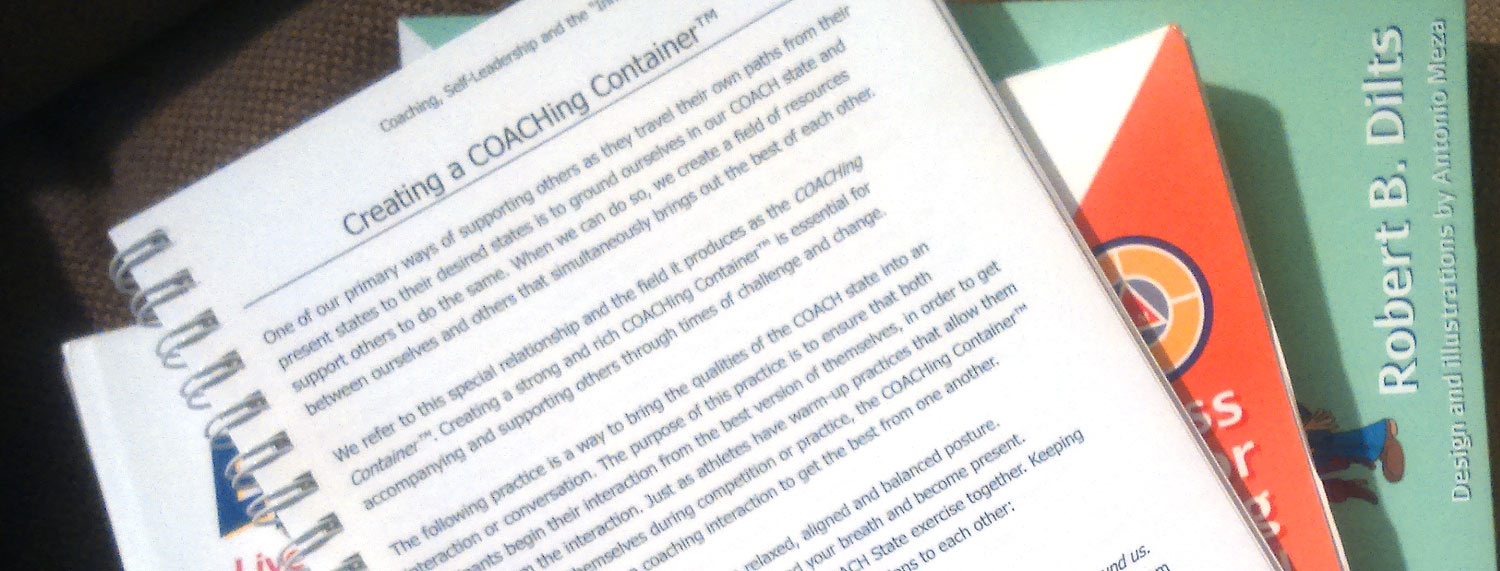As working coaches, we appreciate how important it is to find practical ways to get ourselves into the ‘right state’ for a coaching conversation.
Our role is to provide a sense of safety and structure to the coachee, and to give them the confidence to share openly what is troubling or exciting them. If we are feeling settled and receptive this can make a real difference to our effectiveness.
How do we know if we are in the ‘right state’ rather than the ‘wrong state’ for a coaching conversation?
Robert Dilts is one of the world’s leading coaches, and a pioneer in developing approaches and techniques that can help other coaches be more effective. One of his models explains the difference between the CRASH state and the COACH state.
One of our team attended a series of workshops on coaching and self-leadership conducted by Robert, and the following information has been adapted from an accompanying course workbook*.
Feeling stuck – CRASH
Robert suggests that we can find ourselves in a ‘stuck’ state when we meet significant challenges, especially when we are confronting the unfamiliar, dealing with loss or separation, and having a general sense of uncertainty and vulnerability.
He describes the unhelpful survival strategies we can be plunged into – attack, escape or rigidity (fight, flight, freeze) – and how this might result in regression, inertia, ambivalence, the difficulty of letting go, confusion and conflict. Sound familiar?
This ‘stuck state’ can be summarised as collapsing into a CRASH:
Contraction
Reaction
Analysis Paralysis
Separation
Hurt and Hatred
Feeling resourceful – COACH
Robert feels that in order to progress through change, it is important to cultivate qualities such as flexibility and stability, balance, connection and the ability to let go: being centred, and in your “inner zone of excellence”. This can help us move through times of adversity.
He sums up the processes characterizing being in the COACH state as:
Centred
Open
Attending with Awareness
Connected
Holding
Applying the model – Techniques
Robert feels it is important to have practices that help to create and strengthen the COACH state, enabling us to move through and accompany others through times of challenge and change. We agree!
Included throughout our website is information and techniques that we find useful in maintaining a COACH state. For example: Presence (including Centering) and Rapport.
What new habits might you develop when your life is moving smoothly to help you retain the COACH state (or move out of the CRASH state) during more turbulent times?
* Text adapted from: “Coaching, Self-Leadership and “The Inner Game” of Business” Copyright 1987-2010 Robert B. Dilts. Please credit Robert if you find this model helpful and share it. He is generous in passing on his knowledge, and we feel it is important (and one of our guiding principles) to acknowledge his significant contribution to the field of coaching. Thank you. Here’s a link to Robert’s website: http://www.nlpu.com/NLPU_RBDBio.html

